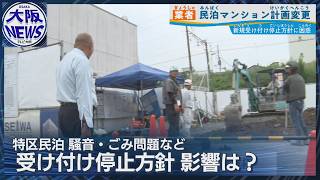The city has increased temporary staff to cope with the rising demand, but real estate operators warn that the decision could slash profits by 30 percent and force a shift from minpaku operations to traditional rentals.
Unlike regular minpaku, which are limited to 180 days of operation per year, Osaka’s special district minpaku have no such cap. This makes them a vital accommodation alternative in a city experiencing high inbound tourism.
To meet surging demand, Osaka’s public health office expanded application counters in August and hired nine additional temporary staff last month. The city expects applications to rise further as businesses rush to submit before the suspension takes full effect. Officials are preparing additional support to handle the influx.
Among those affected is Li Dianlong, a real estate operator in Osaka’s Nishinari Ward. Originally from China, Li began operating special minpaku five years ago and now runs an 83-room building that is fully booked by foreign visitors. He had planned to build two more dedicated minpaku properties in the area, but those plans are now on hold. Instead, the new buildings will be converted into rental apartments, a change he estimates will reduce revenue by about 30 percent.
The impact of the city’s decision extends beyond individual businesses. The Japanese government aims to attract 60 million foreign visitors annually by 2030—more than 1.6 times the record set last year—raising questions about how Osaka and other major destinations will meet future accommodation demand.
The future of the city’s special minpaku system remains uncertain as authorities and businesses navigate the fallout.
https://newsonjapan.com/article/147227.php

Be First to Comment